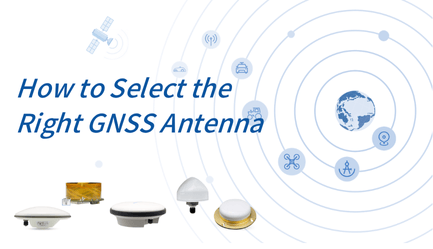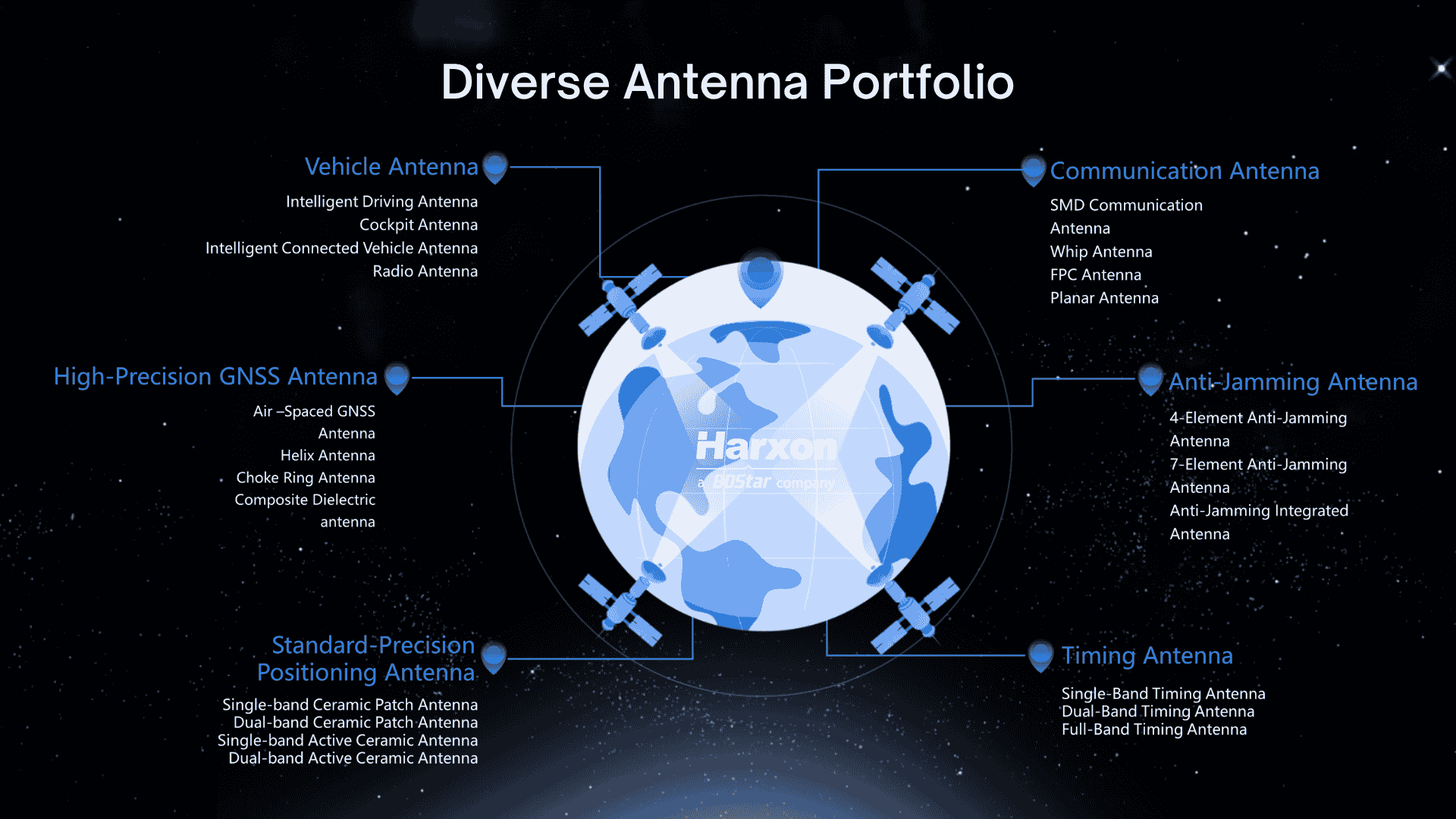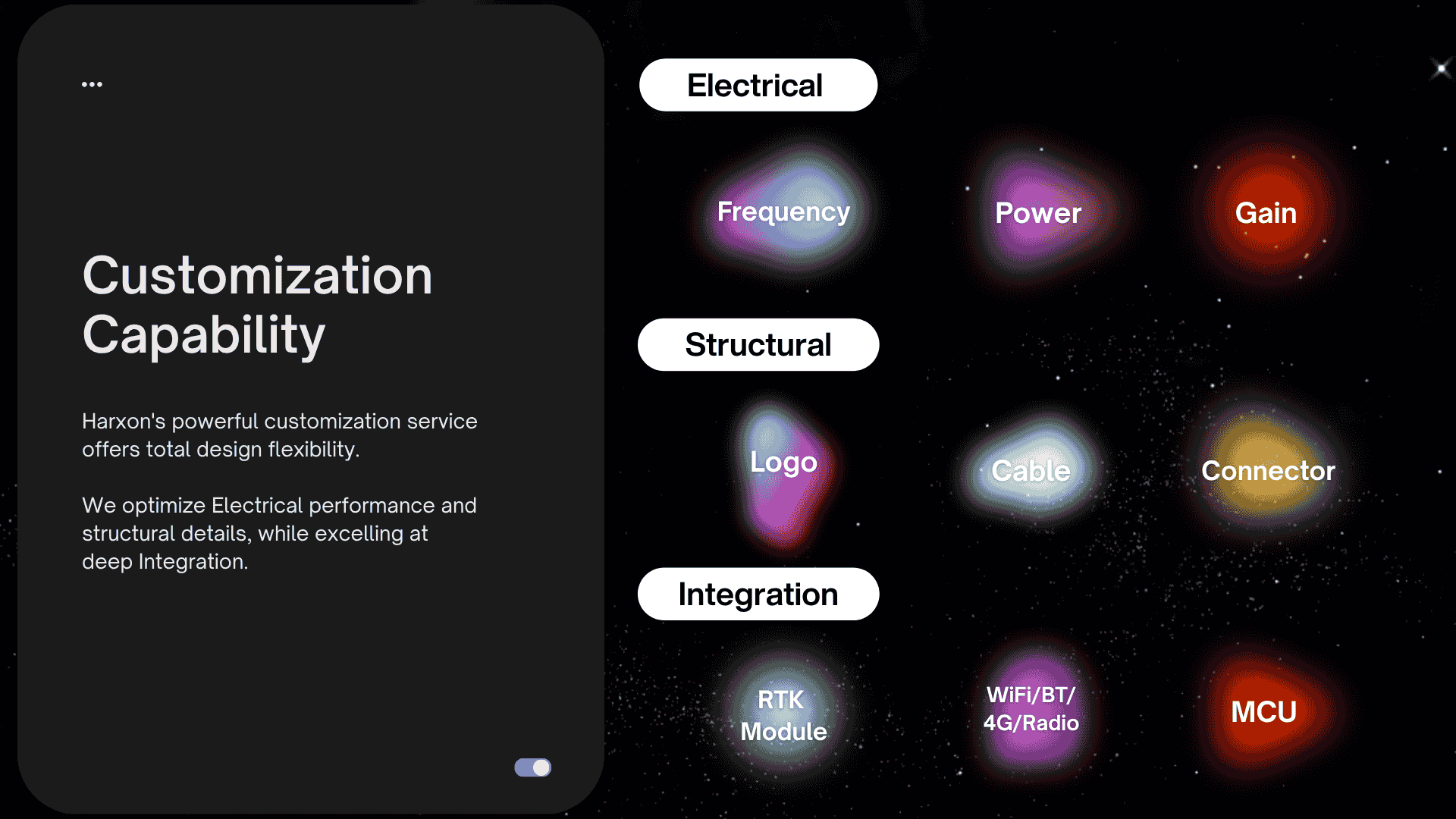

In today's rapidly evolving positioning, navigation and surveying applications, selecting the right GNSS antenna is absolutely critical to achieving reliable, high-accuracy results. Whether you're working in surveying, agriculture, unmanned vehicles, marine navigation or construction, a poor antenna choice can compromise signal quality, multipath rejection, constellation tracking, and ultimately positioning accuracy. This guide walks you through the key steps of how to select a GNSS antenna — from defining your application requirements, to choosing frequency bands, mounting method, amplifier gain, environmental ruggedness, connector types and cable lengths — using a structured, four-step approach. We also highlight how Harxon delivers high-performance GNSS antenna solutions for a wide range of applications.

The first and most fundamental step is to understand the application scenario for your GNSS system. Ask questions like: What are the accuracy demands? Will you use RTK or PPP? What constellations do you need (GPS, GLONASS, Galileo, BeiDou, QZSS, IRNSS)? What environmental conditions will you face (open sky vs urban canyon vs under foliage)? What is the vehicle or platform (robot, drone, vehicle, construction machine, marine vessel, fixed base station)? Based on the image you provided, typical categories might include:
Unmanned platforms (UAVs, robots): size, weight and dynamic motion matter.
Surveying & mapping: high accuracy, stable phase centre, multipath suppression.
Marine / automotive vehicles: ruggedised housing, good L-band or SBAS capability.
Construction/engineering: durable mounting, interference resilience.
Agriculture: rugged but more forgiving in terms of mounting and budget.
Understanding your use case drives all subsequent decisions, from frequency band to mounting to amplifier gain.
Once the application is clear, the next key decision is which frequency bands and GNSS constellations the antenna must support. Modern high-performance antennas support multi-constellation: GPS (L1/L2/L5), GLONASS (G1/G2/G3), Galileo (E1/E5a/E5b/E6), BeiDou (B1i/B1C/B2a/B2b/B3), QZSS, IRNSS/NavIC, SBAS, and often L-Band correction. Here are things to consider:
If you need centimetre-level accuracy (RTK/PPP), multi-band (L1, L2, L5) support is essential, so you capture more signals and correct more errors.
For dynamic environments (drones, moving vehicles), low-elevation tracking is important: wide-beam width, high gain, low phase centre variation.
If you're integrating with correction services (L-Band) or SBAS, then L-Band support matters.
If budget or space are constrained (e.g., embedded vehicles or robots), then a more compact antenna supporting fewer bands may suffice. For example, Harxon's HX-CSX231A is an embedded full-frequency GNSS antenna designed for small robots and vehicles.
Mounting method and size are often overlooked, yet they have a big impact on performance. Key considerations:
Size and weight: For drones or small robots, you'll favour compact, lightweight antennas. Larger survey poles or vehicle roofs can accommodate bigger radomes.
Mounting interface: Pole mount (5/8″-11 screw), magnetic mount, fixed surface mount, adhesive, embedded through-hole — ensure the mounting is stable and appropriate for the platform.
Installation environment: For mobile vehicles, you may want a radome that handles vibration and shock; for fixed installation, you may prioritise phase centre stability.
Ground plane independence or dependence: Some antennas need a proper ground plane; others are ground-plane independent. Depending on where you mount (vehicle roof vs embedded in a robot), you'll need the correct type.
Always ensure the mounting and dimension constraints align with your platform before diving into electrical specs.
Selecting the right antenna amplifier (LNA = Low Noise Amplifier) characteristics and anti-interference features is essential for robust signal reception, especially in challenging conditions (urban canyons, under foliage, near radio towers). Important parameters to check:
LNA gain: Typically 25 dB, 30 dB, 38 dB, 45 dB or higher depending on platform and cable run.
Noise figure: Lower is better — a noisy amplifier degrades weak signals.
Phase centre variation (PCV): This affects accuracy; good antennas have a very stable phase centre. For example, Harxon HX-SE403A lists ±2 mm phase centre error.
Out-of-band rejection / RF interference immunity: Important when you mount near communication equipment or vehicles. Harxon HX-CVX603A advertises excellent anti-interference performance.
Low-elevation tracking / wide beam: For challenging environments, you need antennas with high gain at low elevation angles and wide beamwidth.
In short, match amplifier gain to your cable length and installation environment; ensure you get a low noise figure and strong interference rejection if your environment is demanding.
After the core electrical and mounting specifications are set, several practical and environmental considerations remain: durability, connectors, cable length, radome protection, ingress protection (IP rating), vibration and shock resistance.
Ingress protection (IP) rating: For exterior use (marine, construction, UAS), look for IP67 or better. Harxon's GPS1000 has an IP67 rating.
Operating temperature range, humidity, vibration: For industrial or outdoor use, you may need –40 °C to +85 °C and high humidity tolerance.
Connector type: Ensure your receiver or system matches the antenna connector. Harxon offers varieties (SMA-J, MMCX-C, TNC, etc).
Cable length & signal loss: Long cables reduce signal strength; choose an antenna with higher gain or plan for amplifier placement accordingly.
Radome material & mounting structure: For mobile or harsh environments, the housing needs to withstand vibration, shock, dust, and moisture. Harxon's ruggedised antennas are designed for unmanned vehicles and mobile mapping.
By checking these environmental parameters, you ensure the antenna will perform reliably over time in your intended deployment.
While performance is key, practical considerations like budget, brand reputation, supply chain and service support also matter. It makes sense to lean on reputable suppliers with proven track records. Harxon, as a leading brand of GNSS antenna solution provider, offers a comprehensive product line and supports various applications (surveying, agriculture, UAV, vehicle) with strong R&D and manufacturing capabilities. Because you are comparing options, keep in mind:
The total cost of ownership (installation cost, cabling, mounting hardware, downtime risk) often outweighs the initial hardware cost.
A reputable brand ensures better documentation, support, warranty and global supply. Harxon provides detailed product datasheets and global support.
Compatibility and future-proofing: Choosing a multi-constellation, multi-band antenna today protects you for tomorrow's GNSS systems.
Avoid over-specifying: If your application only needs sub-meter accuracy, you may not need a centi-level RTK antenna, so balance performance vs cost.

When it comes to selecting a GNSS antenna, partnering with a trusted brand is a major advantage. Harxon stands out for several reasons:
Harxon offers a comprehensive product range of GNSS antennas: survey antennas, OEM embedded antennas, ruggedised vehicle and mobile antennas, timing antennas, and anti-jamming solutions.
Their antennas support a wide array of constellations and bands: GPS, GLONASS, Galileo, BeiDou, QZSS, IRNSS/NavIC, SBAS, L-Band.
They emphasise stable phase centre variation, strong low-elevation tracking, and anti-interference performance, all of which are essential for high-precision applications.
Harxon's manufacturing and R&D capabilities are well-established: state-of-the-art facilities, focused on high-precision GNSS antenna solution provision.
Broad application coverage: Harxon antennas are used in UAVs, agriculture, surveying, vehicles and construction, so you can standardise on one brand for multiple platforms, simplifying procurement and support.

Therefore, when you are browsing antennas for your project, starting with Harxon's product lines gives you a high-confidence baseline. From there, you can further refine specific models based on your precise needs (platform size, mounting method, gain, band support, budget, etc.)
Selecting the right GNSS antenna is not simply a checklist of specs — it is a process of aligning your application requirements, frequency/constellation needs, mounting method and size, amplifier & interference performance, environment and connector — and balancing all of this with budget, brand reliability and future-proofing. By following the structured workflow above, you'll minimise surprises, maximise performance and ensure your GNSS system delivers the accuracy, stability and reliability you require. And by choosing a brand like Harxon, you gain access to proven, high-performance antennas with comprehensive support and documentation, across surveying, agriculture, UAV, vehicle and embedded applications. In short: define your needs, match the specs, evaluate practical constraints, pick a trusted brand, test in the field, then deploy confidently.